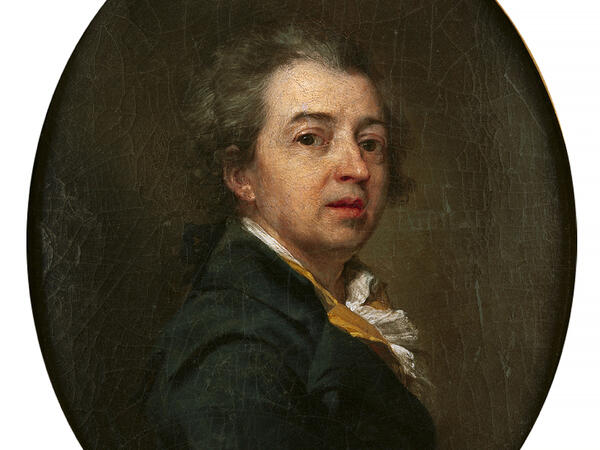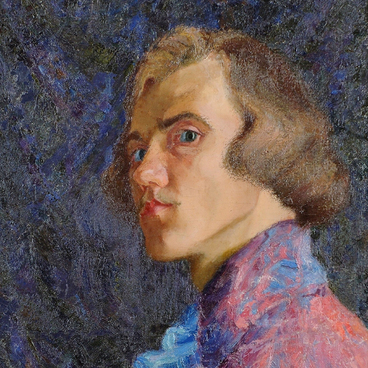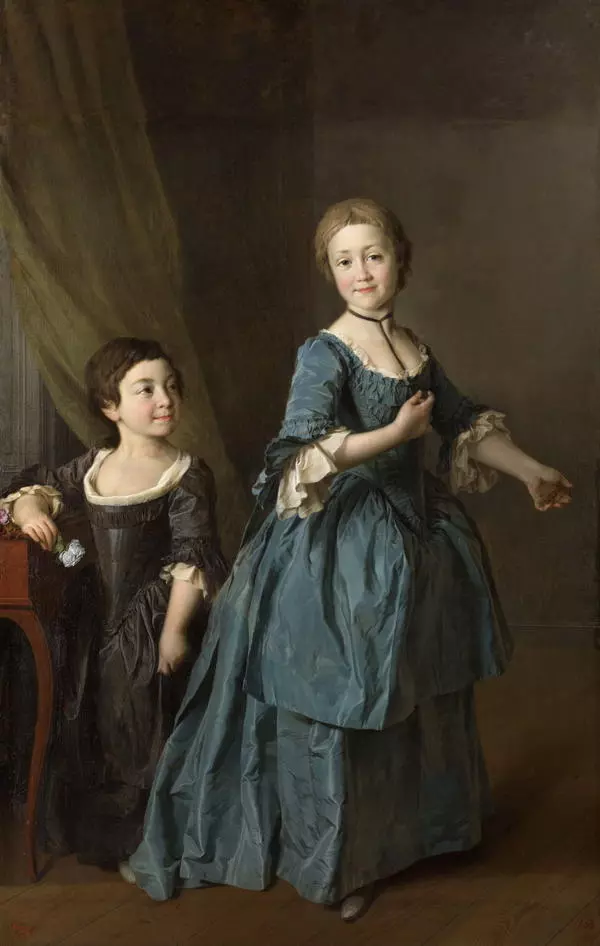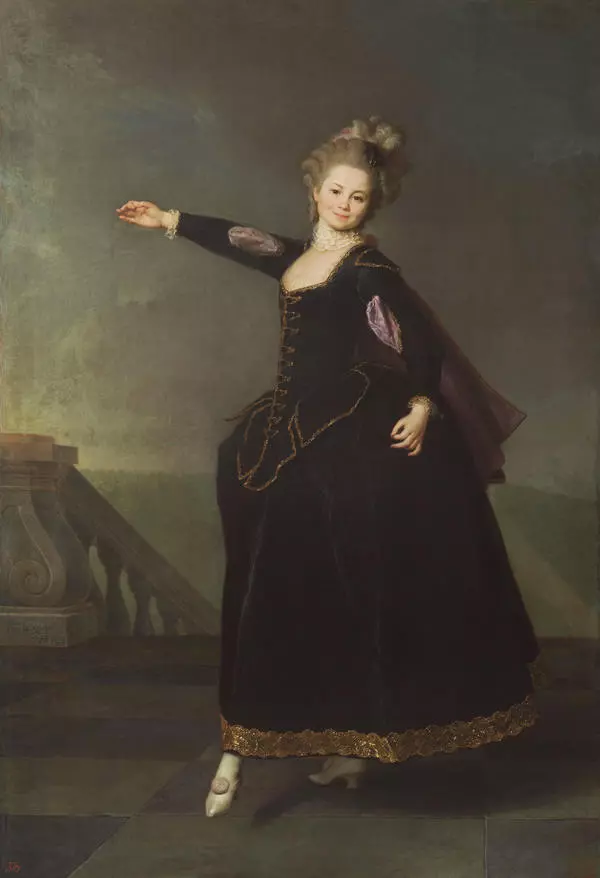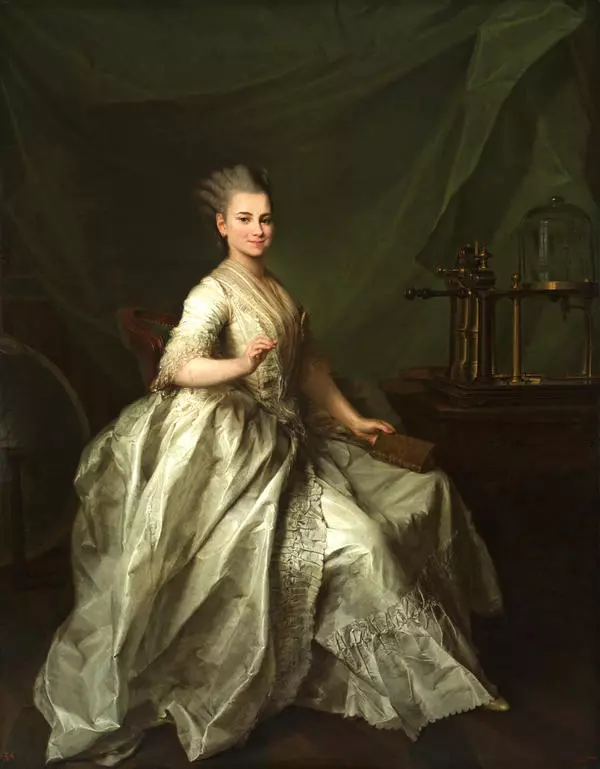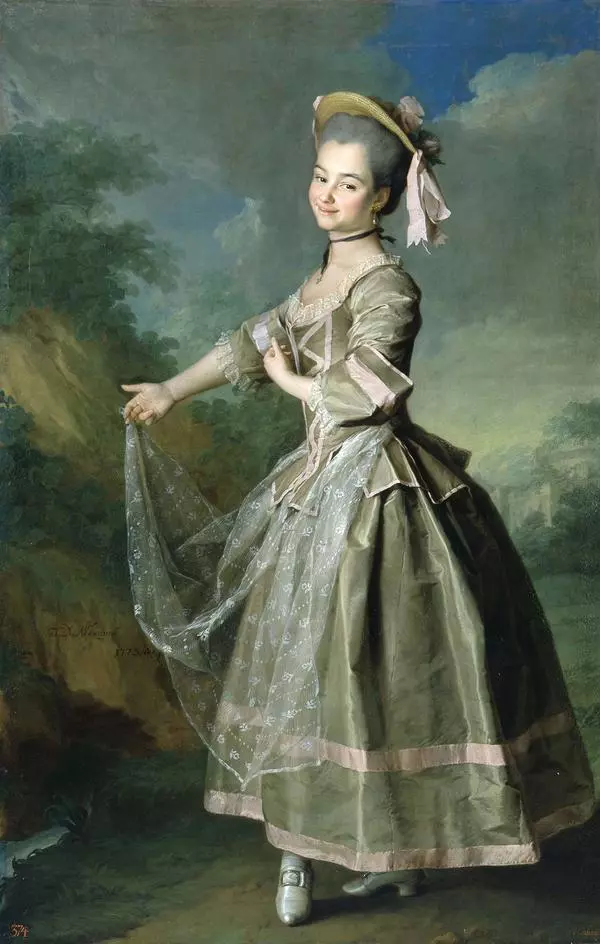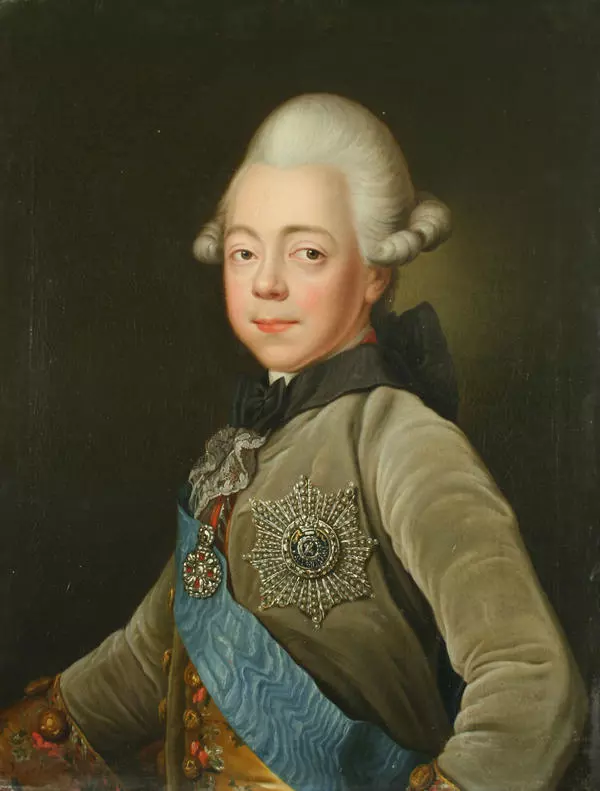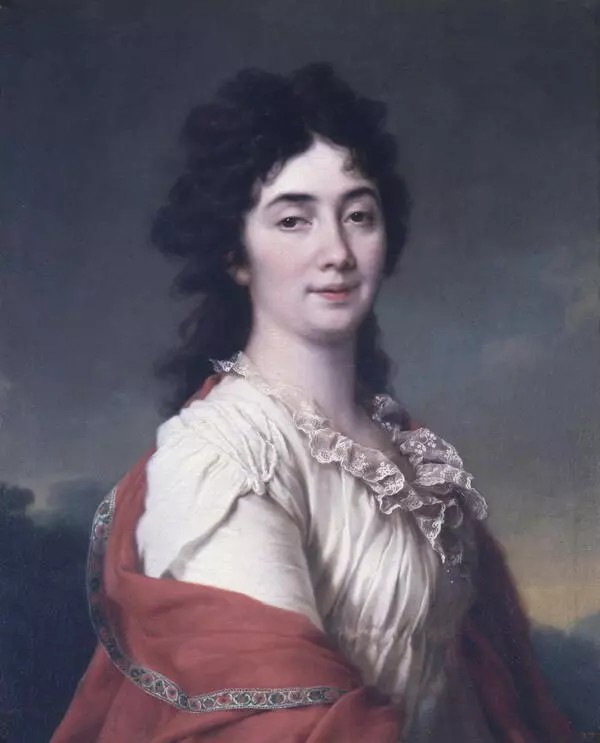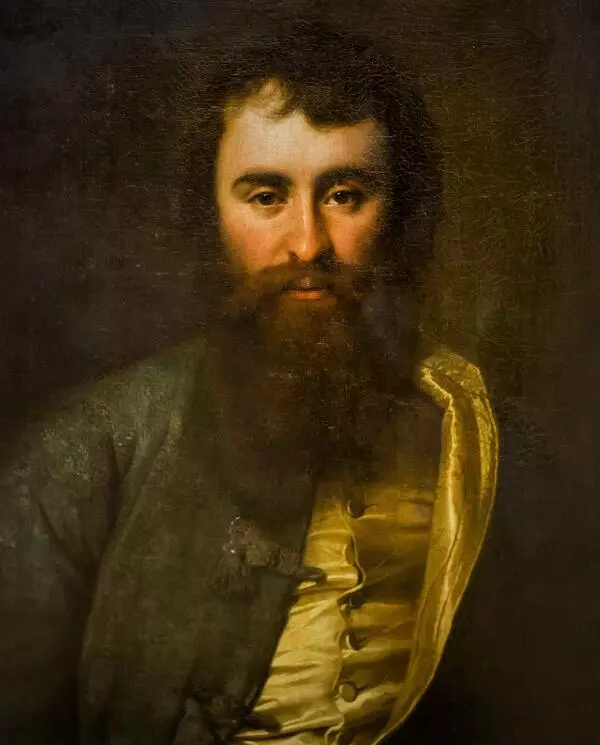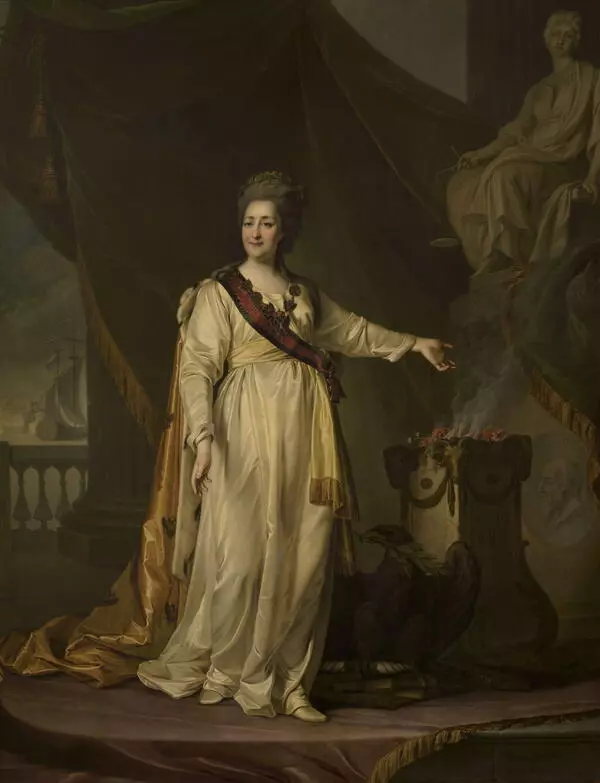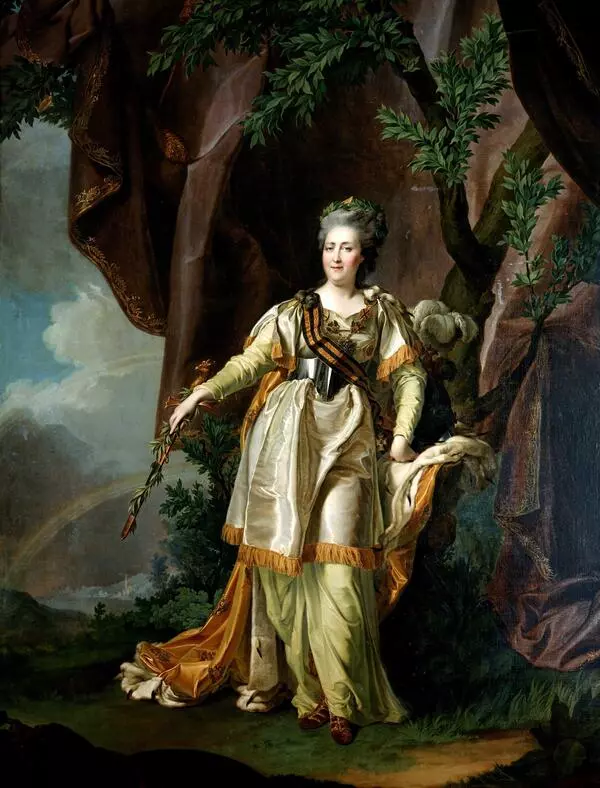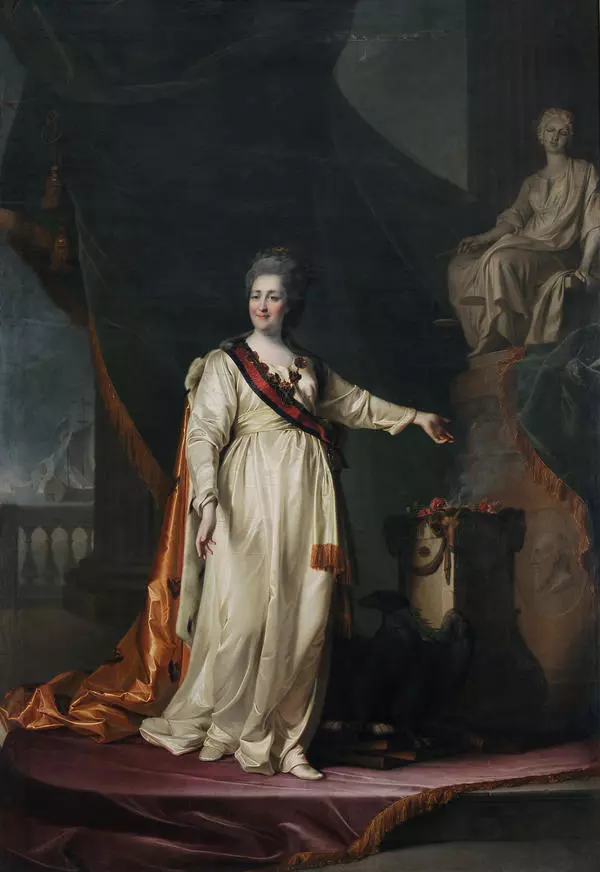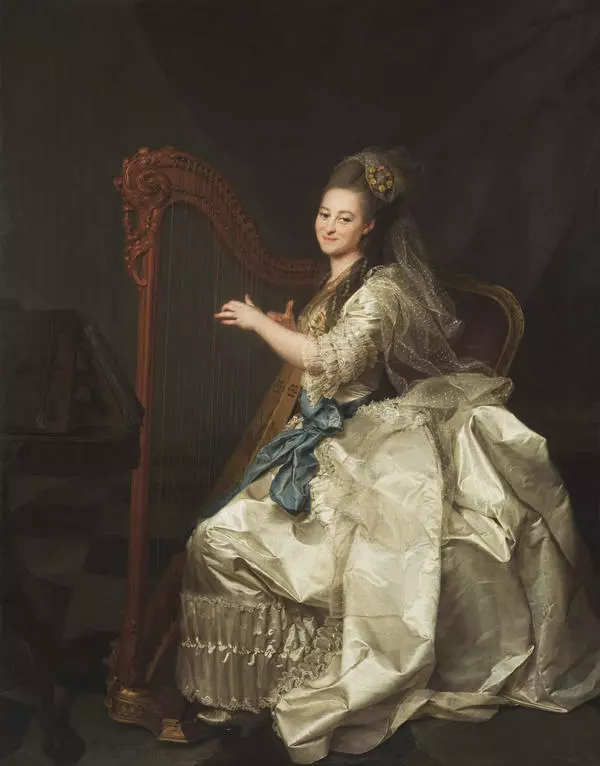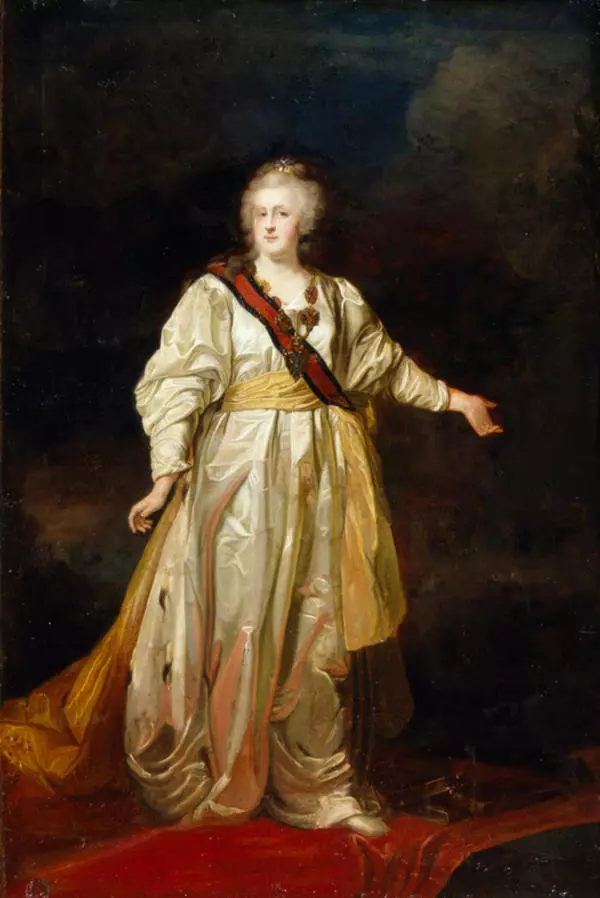Dmitry Levitsky was born in 1735 into the family of an engraving artist; he learned painting from his father in his youth. At the age of 20, Levitsky, together with the artist Alexey Antropov, painted the St. Andrew’s Cathedral in Kyiv, and in 1758, he went to St. Petersburg and entered the Imperial Academy of Arts. His paintings exhibited at the Academy brought fame to Levitsky. At the age of 35, the painter received the title of academician, and 16 years later, he entered the Council of the Academy.
Already in the early works of Levitsky, critics noted his ability to find an expressive posture and gesture, the ability to combine the intensity of the color of individual elements with the tonal unity of the canvas. The painter created portraits of many of his contemporaries: French philosopher Denis Diderot, educator Nikolay Novikov, architect Alexander Kokorinov, philanthropist Prokofy Demidov. Count Artemy Vorontsov commissioned portraits of all his family members for his home gallery to be painted by Levitsky.
The name of the artist is found in the imperial documents. For example, in the expense statement of Empress Catherine II for the “room amount”, i.e. the so-called personal expenses of the imperial family, one can read the lines: “1,000 rubles to the painter Levitsky for two portraits of Her Imperial Majesty”, “800 rubles to the painter Levitsky for the portrait of the King of Prussia”, “1,000 rubles to the painter Levitsky for our large portrait.” In 1783, the artist painted a portrait of the Empress, in which she is depicted as a wise and enlightened legislator. It is believed that it was this painting that inspired Gavriil Derzhavin to create the famous ode “The Vision of Murza”.
In 1783, Levitsky created matching portraits of himself and his wife, Nastasya Levitskaya. He depicted faces illuminated by light against a dark background. Glare falls on the folds of the white frill collar and the cream dress of Levitskaya’s. The artist’s wife was outwardly very similar to Catherine II. Given this, Levitsky often resorted to her help when he painted portraits of the Empress.
According to art critics, in his portraits Levitsky created a new type of personality of the 18th century — energetic, active, with a special inner world. These features became characteristic of a new artistic direction in those years which is known as romanticism.
Already in the early works of Levitsky, critics noted his ability to find an expressive posture and gesture, the ability to combine the intensity of the color of individual elements with the tonal unity of the canvas. The painter created portraits of many of his contemporaries: French philosopher Denis Diderot, educator Nikolay Novikov, architect Alexander Kokorinov, philanthropist Prokofy Demidov. Count Artemy Vorontsov commissioned portraits of all his family members for his home gallery to be painted by Levitsky.
The name of the artist is found in the imperial documents. For example, in the expense statement of Empress Catherine II for the “room amount”, i.e. the so-called personal expenses of the imperial family, one can read the lines: “1,000 rubles to the painter Levitsky for two portraits of Her Imperial Majesty”, “800 rubles to the painter Levitsky for the portrait of the King of Prussia”, “1,000 rubles to the painter Levitsky for our large portrait.” In 1783, the artist painted a portrait of the Empress, in which she is depicted as a wise and enlightened legislator. It is believed that it was this painting that inspired Gavriil Derzhavin to create the famous ode “The Vision of Murza”.
In 1783, Levitsky created matching portraits of himself and his wife, Nastasya Levitskaya. He depicted faces illuminated by light against a dark background. Glare falls on the folds of the white frill collar and the cream dress of Levitskaya’s. The artist’s wife was outwardly very similar to Catherine II. Given this, Levitsky often resorted to her help when he painted portraits of the Empress.
According to art critics, in his portraits Levitsky created a new type of personality of the 18th century — energetic, active, with a special inner world. These features became characteristic of a new artistic direction in those years which is known as romanticism.

